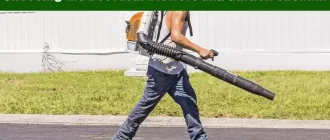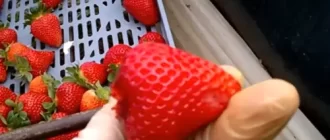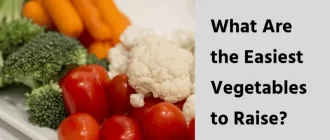When it comes to gardening, having the right tools can make all the difference. But with so many options available, how do you choose the right gardening toolkit for your needs in 2024?
We will explore the essential tools you need for a successful garden and provide practical tips on how to select the best ones for you. So whether you’re a beginner or an experienced gardener, read on to discover how to choose the right gardening toolkit that will help you bring your green thumb dreams to life.
Here’s a quick garden toolkit recommendation from whattdw.com:
Basic Gardening Tools
Hand Trowel

The hand trowel is an essential tool for any gardener. It is used for digging small holes, transplanting seedlings, and weeding. Here are the pros and cons of using a hand trowel:
Pros:
- Versatility: The hand trowel can be used for a variety of tasks in the garden, making it a versatile tool.
- Control: Its small size allows for precise and controlled digging, especially in tight areas.
- Portable: Hand trowels are compact and lightweight, making them easy to carry around the garden.
- Affordable: Hand trowels are generally inexpensive and can fit into any budget.
Cons:
- Limited digging depth: The size of the hand trowel restricts the depth at which you can dig.
- Hand fatigue: Prolonged use can lead to hand fatigue, especially if you have a large garden or many planting beds.
When choosing a hand trowel, consider factors such as the material it is made of (stainless steel or carbon steel), the handle grip (ergonomic or traditional), and the overall quality and durability. It is also important to choose a hand trowel that feels comfortable and fits well in your hand.
Here’s a table comparing different types of hand trowels:
| Traditional Hand Trowels | Ergonomic Hand Trowels | |
|---|---|---|
| Construction | Metal/plastic handle and blade | Metal/plastic handle and blade |
| Grip | Basic grip | Contoured and cushioned grip |
| Comfort | May cause hand fatigue | Provides better hand support |
| Price | Less expensive | Slightly more expensive |
Overall, the hand trowel is an essential tool for any gardener, and choosing the right one depends on your personal preferences and gardening needs.
Pruning Shears

Pruning shears are an essential tool for any gardener, allowing for precise and clean cuts when trimming plants, shrubs, and small branches, states whattdw.com. Here are the pros and cons to consider when choosing pruning shears:
Pros:
- Versatile: Pruning shears can be used for a variety of tasks, including shaping plants, removing dead or diseased branches, and harvesting fruits and vegetables.
- Precision Cutting: With their sharp blades, pruning shears provide clean and accurate cuts, helping to promote the overall health and appearance of your plants.
- Easy to Use: Most pruning shears are designed with ergonomic handles that provide a comfortable grip and reduce hand fatigue during extended use.
- Portable: Pruning shears are typically lightweight and compact, making them easy to carry around the garden.
Cons:
- Limited Cutting Capacity: Pruning shears are designed for smaller branches and twigs, usually up to 1 inch in diameter. For larger cuts, a different tool such as a pruning saw or lopper may be required.
- Maintenance Required: Like any cutting tool, pruning shears need regular maintenance, including sharpening the blades and oiling the moving parts, to ensure optimal performance.
- Safety Precautions: Pruning shears have sharp blades, so it’s important to be cautious and wear protective gloves when using them to avoid accidental cuts or injuries.
When choosing pruning shears, consider the following factors:
- Quality and Durability: Look for pruning shears made from high-quality materials such as stainless steel blades and sturdy handles to ensure they will last for a long time.
- Cutting Capacity: Depending on the type of plants and branches you will be dealing with, choose pruning shears with an appropriate cutting capacity.
- Ergonomics: Opt for pruning shears with ergonomic handles that fit comfortably in your hand and reduce strain during use.
- Safety Features: Some pruning shears include safety locks or covers for the blades when not in use, providing an extra layer of protection.
- Budget: Consider your budget and choose pruning shears that offer a good balance between quality and affordability.
By considering these factors and choosing the right pruning shears for your needs, you can ensure an enjoyable and efficient gardening experience.
Garden Gloves

When choosing the right gardening gloves, there are several factors to consider. Here are the pros and cons of garden gloves:
Pros:
- Protection: Garden gloves provide a barrier between your hands and potential hazards in the garden, such as thorns, sharp objects, and chemical irritants.
- Comfort: Good quality garden gloves are designed to fit well and offer comfort during long hours of gardening.
- Grip: Many garden gloves have textured palms that provide a better grip on tools and plants, reducing the risk of accidents.
- Breathability: Look for gloves made of breathable materials, such as nylon or cotton, to prevent your hands from becoming sweaty and uncomfortable.
- Versatility: Garden gloves come in a variety of styles, from lightweight gloves for delicate tasks to heavy-duty gloves for tougher jobs.
Cons:
- Size and Fit: It can be challenging to find the right size and fit for your hands, as gloves that are too tight or too loose can affect dexterity and comfort.
- Sensitivity: Some garden gloves may reduce sensitivity and tactile feel, making it harder to perform more delicate tasks like planting seeds or handling small flowers.
- Durability: Depending on the material and quality, garden gloves may wear out over time, especially with frequent use and exposure to rough surfaces.
- Cleaning: Certain types of garden gloves may be difficult to clean, especially if they are heavily soiled with dirt or chemicals.
- Cost: High-quality garden gloves can be more expensive, but they are worth the investment for long-term use and protection.
It’s important to try on different gloves and consider your specific gardening tasks and needs before making a purchase. Remember to prioritize comfort, protection, and durability when choosing the right garden gloves for you.
Essential Gardening Tools
Garden Hoe

The Garden Hoe is an essential gardening tool that can be used for various tasks, including cultivating and weeding. Here are the pros and cons of using a Garden Hoe:
Pros:
- Effective for breaking up soil and removing weeds, thanks to its sharp, angled blade.
- Can be used to create furrows for planting seeds.
- Helps in leveling the soil and preparing the garden bed for planting.
- Available in different sizes and designs to suit different gardening needs.
- Relatively easy to use with minimal physical effort required.
Cons:
- Limited functionality compared to other gardening tools.
- Might not be suitable for certain gardening tasks that require more precision or fine detail work.
- Depending on the design and quality of the hoe, it may require regular sharpening or maintenance.
- The blade may become dull or damaged over time with heavy use.
- Using a hoe requires proper technique and caution to avoid damaging nearby plants or roots.
When choosing a Garden Hoe, consider factors such as the type of gardening you will be doing, the size and design of the hoe, and your budget. It’s also important to research the durability and quality of the tool to ensure it will withstand regular use.
Rake

When it comes to gardening tools, a rake is an essential tool that every gardener should have in their toolkit. Rakes come in various sizes and designs, each serving a specific purpose in the garden, according to whattdw.com. Here are some pros and cons to consider when choosing a rake for your gardening needs:
Pros:
- Versatility: Rakes are versatile tools that can be used for various tasks in the garden, such as removing leaves, leveling soil, spreading mulch, and gathering debris.
- Easy to use: Rakes are lightweight and easy to handle, making them suitable for gardeners of all ages and abilities.
- Efficient: Rakes have a wide head with multiple tines, allowing you to cover a larger area in less time.
- Durability: Rakes are typically made from sturdy materials such as steel or durable plastic, ensuring they can withstand regular use and harsh outdoor conditions.
Cons:
- Limited precision: While rakes are great for general garden maintenance, they may not provide the precision needed for delicate tasks like removing weeds or working around fragile plants.
- Not suitable for all soil types: Rakes may not be effective on heavy or compacted soil, as the tines may get stuck or not penetrate deep enough.
- Storage space: Rakes can be quite large, requiring ample storage space in your garden shed or garage.
When choosing a rake, consider the size and shape of the garden you’ll be working in. A wide rake with closely spaced tines is ideal for collecting leaves and debris, while a narrower rake with more widely spaced tines is better for leveling soil and spreading mulch. Additionally, look for a rake with a comfortable handle grip to minimize strain on your hands and wrists during prolonged use.
Garden Fork

The garden fork is a versatile tool that is essential for any gardener. It is primarily used for digging and loosening soil, making it ideal for tasks such as preparing planting beds, aerating soil, and turning compost. Here are the pros and cons of using a garden fork:
Pros:
- Versatility: The garden fork is a multipurpose tool that can be used for various gardening tasks, including cultivating, lifting, and turning soil.
- Soil aeration: The forked tines of the garden fork help loosen compacted soil, allowing air, water, and nutrients to penetrate and reach the plant roots.
- Durable: Garden forks are typically made from sturdy and durable materials like stainless steel or carbon steel, ensuring they can withstand the rigors of heavy use.
- Ergonomic handles: Many garden forks come with ergonomic handles that provide a comfortable grip and reduce strain on the hands and wrists during prolonged use.
Cons:
- Weight and size: Garden forks can be heavy and bulky, making them less suitable for individuals with limited strength or smaller stature.
- Limited precision: While the garden fork is excellent for breaking up large clumps of soil, it may not offer the same level of precision as smaller hand tools for more delicate gardening tasks.
When choosing a garden fork, consider the following factors:
- Material: Look for a garden fork made from high-quality and durable materials like stainless steel or carbon steel. These materials offer rust resistance and long-term durability.
- Handle design: Opt for a garden fork with an ergonomic handle that provides a comfortable grip and reduces strain on the hands and wrists.
- Tine design: Consider the length and spacing of the fork’s tines. Longer tines can penetrate deeper into the soil, while closer spacing between tines allows for better control and finer cultivation.
- Size and weight: Choose a garden fork that suits your physical capabilities. If you have limited strength or are of smaller stature, opt for a lighter and more compact option.
- Reviews and recommendations: Read customer reviews and seek recommendations from experienced gardeners to ensure you select a reliable and efficient garden fork.
Remember, the right garden fork will greatly assist you in maintaining healthy soil and achieving successful gardening outcomes.
Specialized Gardening Tools
Pruning Saw

When choosing a pruning saw for your gardening toolkit, there are several factors to consider. Pruning saws are designed for cutting through thicker branches and stems that may be difficult to tackle with traditional pruners. Here are some pros and cons to consider:
Pros:
- Versatility: Pruning saws can handle various tasks, from pruning trees to cutting through thicker branches.
- Power and Efficiency: Pruning saws provide the extra power and leverage needed to make clean and precise cuts.
- Durability: Most pruning saws are designed with high-quality materials that can withstand tough conditions and frequent use.
Cons:
- Size and Weight: Pruning saws tend to be larger and heavier than other pruning tools, which may make them less suitable for smaller tasks or individuals with limited strength.
- Precision: While pruning saws are effective for cutting through thick branches, they may not offer the same precision as pruners for more delicate pruning tasks.
It’s important to choose a pruning saw that matches your gardening needs. Look for a saw with a comfortable grip and a blade length suitable for the types of plants you’ll be pruning. Consider brands known for their durability and quality, such as Fiskars or Bahco. Don’t forget to also consider safety features, such as blade locks or sheaths to protect yourself and others when the saw is not in use.
Garden Scissors

Garden scissors are a versatile tool that can be used for a variety of tasks in the garden, says Reyus Mammadli. Here are the pros and cons of using garden scissors:
Pros:
- Versatility: Garden scissors can be used for cutting flowers, herbs, and small plants with precision.
- Lightweight: Garden scissors are usually lightweight, making them easy to maneuver and use for extended periods.
- Precision Cutting: With their sharp blades and fine tips, garden scissors allow for precise and delicate cuts, perfect for deadheading flowers or trimming small branches.
- Portability: Garden scissors are typically compact in size, making them easy to carry around in your gardening tool belt or pocket.
Cons:
- Limited Cutting Capacity: Garden scissors may not be suitable for cutting thick branches or larger plants. For more heavy-duty cutting, you may need to rely on pruners or shears.
- Hand Fatigue: If you have a large amount of cutting to do, using garden scissors for an extended period can lead to hand fatigue. Consider using ergonomic garden scissors or taking breaks to prevent discomfort.
When choosing garden scissors, look for ones with sharp, stainless steel blades for long-lasting performance. Consider the comfort of the handles and whether they are suitable for your hand size. Also, ensure that the blades can be easily cleaned and sharpened for maintenance.
Remember to use garden scissors for their intended purpose and avoid using them for tasks they are not designed for, as this may cause damage to the tool or result in improper cuts.
Garden Sprayer

When choosing a garden sprayer, there are several factors to consider to ensure you select the right tool for your needs. Here are the pros and cons of a garden sprayer:
Pros:
- Versatility: Garden sprayers can be used for a variety of tasks, including applying pesticides, herbicides, fertilizers, and watering plants.
- Efficiency: They provide a fast and efficient way to cover large areas with liquids, saving you time and effort.
- Adjustable Spray Patterns: Most garden sprayers offer multiple spray patterns, allowing you to choose the appropriate one for your specific needs.
- Uniform Coverage: Sprayers provide consistent coverage, ensuring that your plants receive an even distribution of the liquid.
- Easy to Use: Garden sprayers are generally easy to operate, with straightforward instructions.
Cons:
- Limited Capacity: Depending on the size of the sprayer, it may have a limited capacity, requiring you to refill it frequently for larger gardening tasks.
- Maintenance: Sprayers require regular cleaning and maintenance to prevent clogs and ensure optimal performance.
- Potential Chemical Exposure: When using a garden sprayer for applying pesticides or herbicides, there is a risk of exposure to potentially harmful chemicals. It’s important to follow safety guidelines and use protective gear, such as gloves and goggles.
Overall, a garden sprayer can be a valuable tool for maintaining your garden, providing versatility and efficiency. Consider the size of your garden, the type of liquids you will be applying, and your comfort level with handling potentially hazardous substances. It’s also important to choose a high-quality sprayer from a reputable brand to ensure durability and reliable performance.
Ergonomic Gardening Tools
Ergonomic Hand Trowel
The Ergonomic Hand Trowel is a tool designed for efficient digging and planting in the garden. Its ergonomic handle provides a comfortable grip, reducing strain on the hand and wrist during use. Here are some pros and cons to consider:
Pros:
- Ergonomic handle design reduces hand and wrist fatigue
- Durable construction for long-lasting use
- Sharp blade for easy soil penetration
- Lightweight and easy to maneuver
- The compact size makes it suitable for small gardens or container gardening
Cons:
- The ergonomic handle may not be suitable for users with larger hands
- Some users may prefer a longer handle for greater leverage
- May not be suitable for heavy-duty digging tasks
Overall, the Ergonomic Hand Trowel is a versatile and comfortable tool for everyday gardening tasks. It is particularly beneficial for people with hand or wrist issues. However, if you have larger hands or require a tool for heavy-duty digging, you may want to consider alternative options.
Ergonomic Pruning Shears
When it comes to choosing the right gardening tools, ergonomic pruning shears are a must-have for any avid gardener. These shears are designed with comfort and ease of use in mind, making them a great choice for those who spend a lot of time working with plants and shrubs.
Pros:
- Ergonomic design: The handles of ergonomic pruning shears are specifically shaped to fit the natural contours of your hand, reducing strain and fatigue during use.
- Soft grip handles: Many ergonomic pruning shears feature soft grip handles, providing additional comfort and reducing the risk of slipping while pruning.
- Precise cutting: The sharp blades of ergonomic pruning shears allow for clean and precise cuts, ensuring the health of your plants.
- Adjustable tension: Some models come with adjustable tension settings, allowing you to customize the cutting force to suit your needs.
- Durability: Ergonomic pruning shears are typically made from high-quality materials, ensuring that they will last for years to come.
Cons:
- Higher cost: Ergonomic pruning shears may be slightly more expensive than traditional pruning shears due to their specialized design and added features.
- Size limitations: Depending on the brand and model, ergonomic pruning shears may have size limitations when it comes to the thickness of branches they can cut.
Overall, the benefits of using ergonomic pruning shears outweigh the potential drawbacks. They provide a comfortable and efficient gardening experience, helping you achieve the best results in your garden.
Ergonomic Garden Gloves
Ergonomic Garden Gloves:
Pros:
- Designed with a comfortable and ergonomic fit, reducing hand fatigue and strain during long periods of use.
- Provide excellent grip and dexterity, allowing for precise handling of tools and plants.
- Offer protection against cuts, abrasions, and thorns while gardening.
- Made from high-quality materials that are durable and long-lasting.
- Available in various sizes to fit different hand shapes.
Cons:
- May be more expensive compared to regular garden gloves.
- Limited color options and designs available.
- Some users may find them a bit bulky or restrictive in movement compared to thinner gloves.
When choosing ergonomic garden gloves, it’s essential to consider factors such as comfort, grip, protection, and durability. These gloves are specifically designed to provide extra support and reduce stress on your hands and wrists. They offer features like reinforced fingertips, breathable materials, and adjustable wrist closures for a secure fit.
Here’s a quick summary of the key points to consider when choosing gardening tools:
| Factors to Consider | |
|---|---|
| Type of Gardening | Evaluate the specific type of gardening tasks you will be performing (e.g., planting, pruning, weeding) to determine the necessary tools. |
| Physical Capabilities | Consider your physical capabilities, such as strength, mobility, and any existing injuries or conditions, to choose tools that are comfortable and easy to use. |
| Durability and Quality | Research the durability and quality of the tools to ensure they will withstand regular use and last for a long time. |
| Budget | Determine your budget and look for tools that offer the best value for money, considering both cost and quality. |
| Tool Features | Consider the specific features of each tool, such as ergonomic design, handle grip, and blade sharpness, to find the ones that best suit your needs. |
Consider the type of gardening you will be doing
When choosing gardening tools, it’s important to consider the type of gardening you will be doing. Different gardening tasks require different tools, so it’s essential to match the tools to your specific needs.
If you’ll be primarily doing container gardening or working in small flower beds, a hand trowel and pruning shears will likely be sufficient. However, if you plan on maintaining a large vegetable garden or tackling heavy-duty landscaping projects, you may need additional tools such as a garden hoe, rake, or garden fork for efficient soil preparation and maintenance.
Consider the size of your garden and the types of plants you’ll be tending to. Some plants, like roses or fruit trees, may require specific tools such as a pruning saw or garden scissors for precise pruning and shaping.
Additionally, think about the level of maintenance you’ll be undertaking. If you’ll be frequently applying fertilizers or pesticides, a garden sprayer may be necessary.
By considering the specific needs of your garden, you can choose the right tools that will make your gardening tasks easier and more enjoyable.
Evaluate your physical capabilities
When choosing gardening tools, it is important to evaluate your physical capabilities. Consider factors such as your strength, dexterity, and any physical limitations you may have. For example, if you have arthritis or weak hands, you may want to look for tools with ergonomic handles that provide a more comfortable and secure grip. It is also important to consider the weight of the tools, as heavy tools can strain your muscles and joints over time. By assessing your physical abilities, you can choose tools that are well-suited to your needs and ensure a more enjoyable and efficient gardening experience.
Research the durability and quality of the tools
Researching the durability and quality of gardening tools is crucial to ensure that you invest in tools that will last long and provide optimal performance. Here are some factors to consider when evaluating the durability and quality of gardening tools:
- Material: Look for tools made from high-quality materials such as stainless steel or carbon steel blades for sharpness and durability. Handles made from sturdy materials like hardwood or fiberglass will ensure a comfortable grip and long-term use.
- Construction: Examine the construction of the tools to ensure they are well-built and sturdy. Check for solid connections between the handles and blades or heads. Avoid tools with flimsy or weak joints that are prone to breaking.
- Reviews and ratings: Read customer reviews and ratings to gather feedback on the durability and quality of the tools. Look for reputable brands with positive reviews and high ratings from other gardening enthusiasts.
- Warranty: Check if the tools come with a warranty or guarantee. A warranty indicates that the manufacturer stands behind the quality and durability of their product.
- Price: While price is not always an indication of quality, extremely low-priced tools may compromise on durability and performance. Consider investing a bit more in tools that are known for their durability and reliability.
Remember, investing in high-quality and durable gardening tools will save you money in the long run and provide a more enjoyable gardening experience.
Determine your budget
When choosing the right gardening tools, it’s crucial to determine your budget beforehand. Gardening tools come in a wide range of prices, so it’s important to set a budget that aligns with your financial capabilities. Consider how often you will use the tools and the quality and durability you require. While it’s tempting to opt for the cheapest option, investing in higher-quality tools may save you money in the long run as they tend to last longer.
If you’re on a tight budget, prioritize the essential tools and gradually build your collection over time. Remember, it’s better to invest in a few high-quality tools that will last rather than purchasing multiple low-quality tools that will break easily.

Key points to remember when choosing gardening tools
When choosing gardening tools, keep these key points in mind:
- Consider the type of gardening you will be doing: Different gardening activities require specific tools. For example, if you will be doing a lot of digging, a garden fork would be essential.
- Evaluate your physical capabilities: Take into account your strength and mobility. If you have limited strength or mobility, look for lightweight and ergonomic tools that are easy to handle.
- Research the durability and quality of the tools: Look for tools made from high-quality materials that can withstand outdoor conditions and regular use. Read reviews and ratings to ensure the tools are durable and long-lasting.
- Determine your budget: Set a budget for your gardening tools and look for options within that range. Remember that investing in quality tools may be more expensive initially but can save you money in the long run.
- Check for warranties and guarantees: Look for tools that come with warranties or guarantees to protect your investment. This ensures that you can get a replacement or repair in case of any defects or issues.
- Try before you buy: If possible, visit a gardening store and test out the tools before purchasing them. Get a feel for the weight, grip, and overall comfort to ensure they are suitable for you.
- Seek recommendations and advice: Ask experienced gardeners or visit gardening forums and communities for recommendations on the best tools for specific tasks. Their expertise can help you make an informed decision.
Remember, choosing the right gardening tools is crucial for your gardening success and enjoyment. By considering these key points, you can find the perfect tools that suit your needs and make your gardening experience more enjoyable.
FAQ
1. What is the best tool for gardening?
The selection of the “best” tool for gardening is largely subjective, depending on the specific tasks and the gardener’s preference. However, certain tools such as a hand trowel, pruners, and a garden fork are widely recognised as essential for most gardening tasks.
2. What is the most used gardening tool?
The hand trowel is typically the most frequently used gardening tool. Perfect for planting, digging, potting, and weeding, a hand trowel is a versatile tool that’s an essential in almost every gardener’s tool shed.
3. What power garden tools do I need?
Again, the necessary power tools largely depend on the type and scale of your gardening. For standard home gardens, some of the most commonly used power tools include:
- Electric or gas-powered lawnmower
- Leaf blower for yard cleanliness
- Hedge trimmer for maintaining hedges and shrubs
- String trimmer (also known as a weed eater or strimmer) for fine-tuning areas the lawnmower cannot reach.
4. What is the best tool to use for weeding?
The weed puller, also known as a weed extractor or a dandelion digger, is an excellent tool for removing weeds. This tool is designed to penetrate the soil easily and remove weed roots from the ground, thereby preventing them from quickly growing back.
5. Which garden tool is used for cutting?
Several garden tools are designed for cutting. Pruners and secateurs are ideal for cutting branches and thick plant stems. Garden shears are better suited for shaping bushes and hedges. For larger branches, a pruning saw or chainsaw may be necessary.
6. Who makes the best garden tools?
Several brands are well-respected in the gardening industry. Some of the top manufacturers include Fiskars, known for their durable and high-quality tools, and Gardena, which provides a range of premium gardening tools. Other notable brands include Spear & Jackson, Wilkinson Sword, and Bulldog.
7. What is the best tool to remove grass from a garden?
To remove grass effectively, a sod cutter is often the best tool. Manual sod cutters operate like a shovel but are designed to slice beneath the grass, separating the roots from the soil. Powered sod cutters are available for larger areas and can significantly reduce physical labor. For smaller patches or for precision work, a flat-bladed spade may be sufficient.









